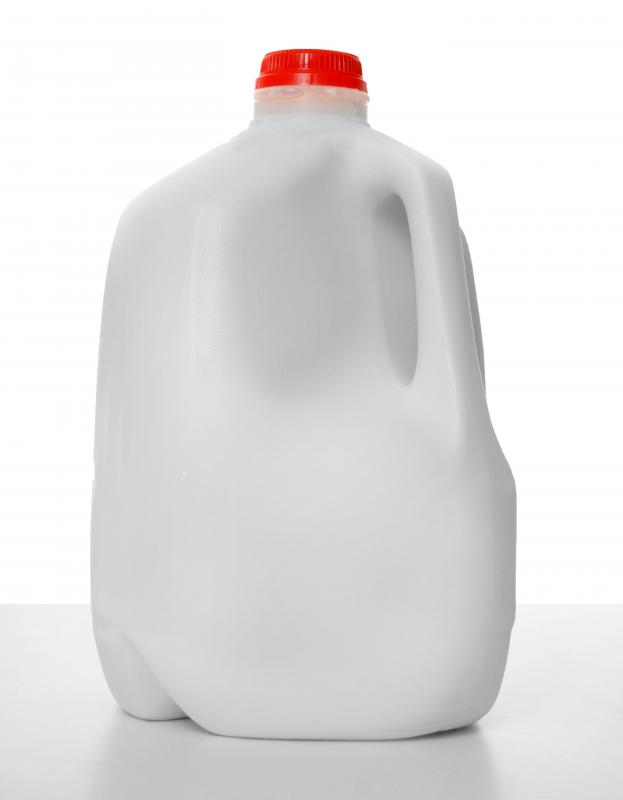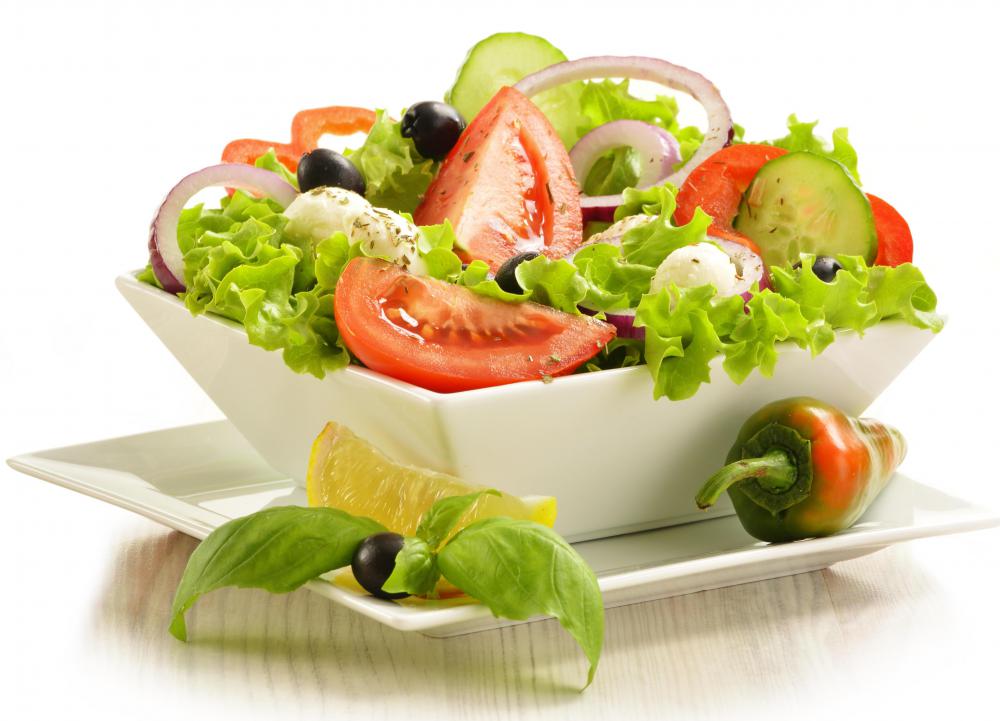At DelightedCooking, we're committed to delivering accurate, trustworthy information. Our expert-authored content is rigorously fact-checked and sourced from credible authorities. Discover how we uphold the highest standards in providing you with reliable knowledge.
What is Halloumi?
Halloumi is a semi-soft cheese that is closely associated with Cyprus and the Middle East. This cheese is a popular inclusion in many Cypriot dishes, and it is incredibly versatile. It can be grilled, roasted, fried, or eaten fresh, and it has a mild, vaguely tangy, creamy, slightly salty taste that pairs well with a wide range of foods. Some specialty markets and import stores carry halloumi, and Cypriot producers are sometimes willing to ship it directly to consumers.
Traditional halloumi is made from a blend of sheep and goat milk, which gives the flavor a distinctive tang. Cheese made from cow's milk is growing more common, since this type of milk is cheaper and it has a more mild flavor. Some producers blend cow, sheep, and goat milk to make their cheese so that they can retain the tangy flavor but keep their costs down.

Some people compare halloumi to mozzarella, since both cheeses are heat proofed in the curd form, which allows them to be used on the grill or in roasts while retaining their shape. It also has the classic layered, fibrous texture associated with mozzarella. Typically, the cheese is formed into roughly rounded blocks for sale, and, like fresh mozzarella, halloumi is packaged in brine to keep it free of bacteria until consumers want to use it. Some producers also vacuum pack it for a longer shelf life, and the cheese can be frozen for up to one year.

When halloumi is grilled, it develops a rich golden crust, and while it softens, it does not melt. The cheese also holds it shape when fried; some people like to deep fry small chunks to make cheese crisps for salad and other dishes. Halloumi can also be roasted with vegetables, or sliced into wedges of varying sizes and served fresh. The cheese pairs well with crusty bread, tomatoes, olives, and salads, and many Middle Eastern and Cypriot recipes call for it.

As of 2007, several halloumi producers were lobbying for a Protected Designation of Origin (PDO) for this cheese, meaning that cheeses would need to meet certain minimum standards before they could be labeled as “halloumi.” These standards would probably limit its production to Cyprus, and they might also dictate preparation techniques. There is some dispute over whether the PDO would allow cow's milk to be used, which has caused negotiations to drag on. As a result, facsimiles masquerading as the real deal can be found in many European markets; these cheeses are of varying quality.
AS FEATURED ON:
AS FEATURED ON:













Discussion Comments
I used to think that the only way to eat halloumi cheese was to toast it or fry it. I have some at home and I'm looking for different recipes I can try with it and I learned that there are many different ways to make it. There are meatball, salad and pastry recipes that call for halloumi.
I can toast it and grind it with meat to make meatballs or put toasted chunks of it in sandwiches, salads or croissants.
I'm wondering if it would be good as a replacement for paneer in Indian dishes. I think it's worth a try! I have a feeling that I could make a really great spinach paneer dish with it.
When I was on vacation in Cyprus, I used eat halloumi practically everyday with watermelon and bread. It is a common snack for Cypriots and really perfect for summer days.
One of the hotel employees even told me how special halloumi is. Apparently it is made from fresh cow milk (without pasteurization) and salted so that it last a really long time without spoiling. They also had halloumi with herbs like mint and oregano aside from the plain one.
I had halloumi for the first time at a restaurant last week. It was one of the appetizer options and my friends and I ordered it, not really knowing what to expect.
We were served a plate with a thick slab of toasted cheese that looked absolutely divine. It had a soft texture but was easy to cut and didn't become long. It was served with bread and we ate it so fast, it was gone in a few minutes. It was definitely one of the most delicious appetizers I have had, but also a bit unhealthy. I can't imagine how much fat was in it, but I'm sure that's why it tastes so good!
Post your comments